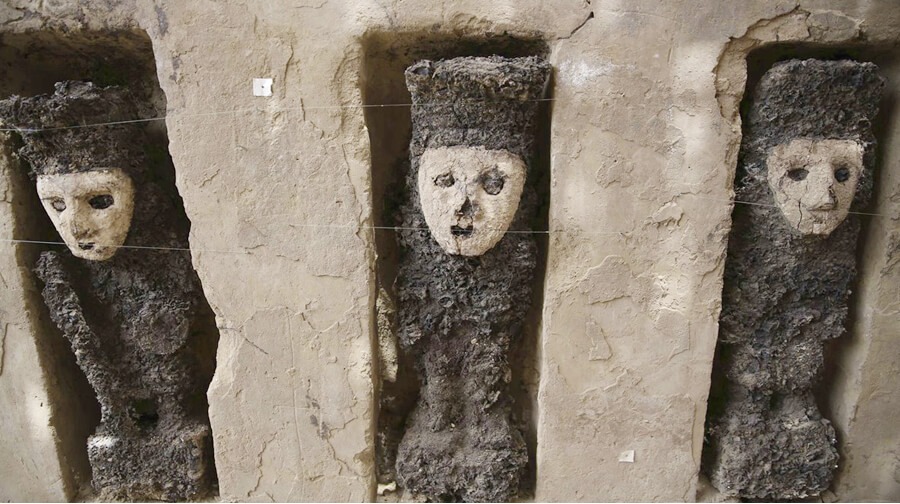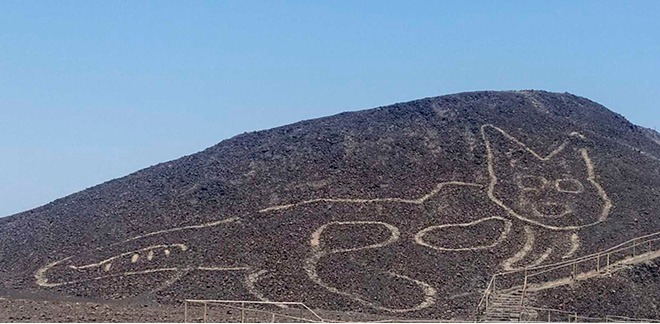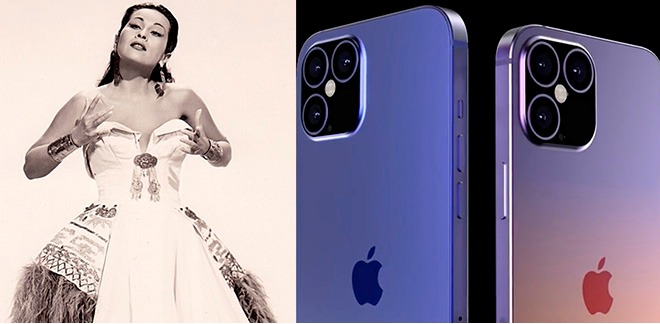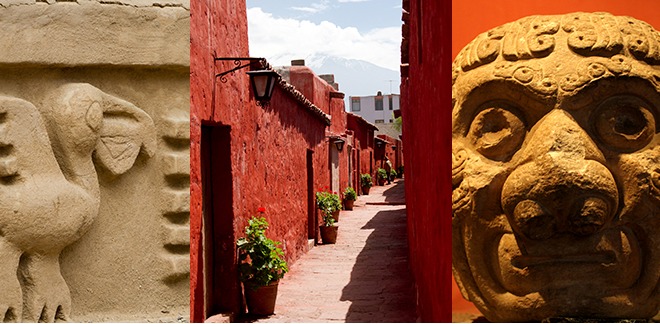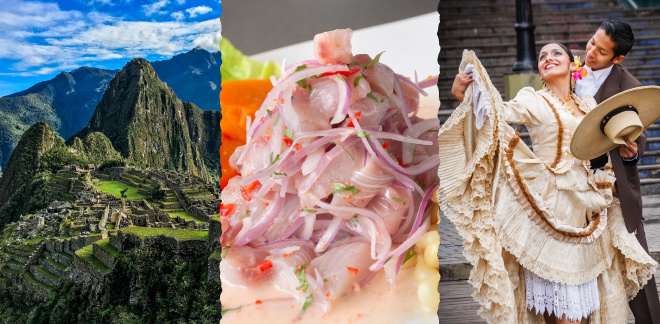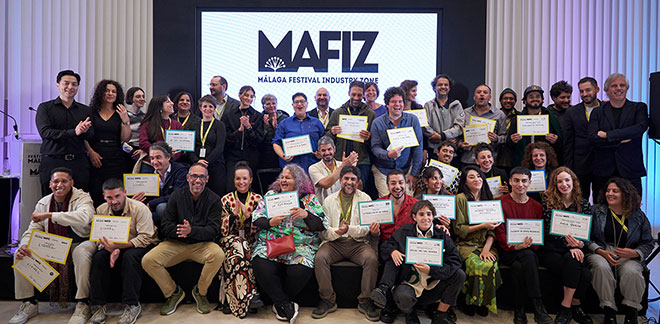Chan Chan idols discovery was considered to be among the 10 greatest archaeological finds in 2018
Síguenos en:Google News
In October 2018, the Ministry of Culture of Peru revealed an important discovery in the gigantic citadel of Chan Chan (La Libertad); 19 anthropomorphic wooden sculptures and a corridor decorated with mud reliefs were found, all corresponding to the Chimú culture.
This discovery was picked out by the prestigious National Geographic magazine (Spain), which chose to include it in its list of 10 amazing archaeological finds of 2018.
The head of the Chan Chan Research and Conservation Unit, Arturo Paredes, explained that the sculptures would probably have been guardians at the archaeological site, due to their location at the main entrance. They would also have been used as markers for tombs of important figures from the Chimú culture.
The sculptures, more than 750 years old, measure about 2 feet high, are upright and located on the sides of the passageway. They are holding a scepter in one hand and a trophy head in the other; with a circular shield on the back. The idols are also wearing clay masks.
According to the archaeologist in charge of the project for the 'Restoration of the perimeter walls of the walled complex Utzh An (Great Chimu)', Henry Gayoso Rullier, the sculptures are probably the oldest known on this site. "They could belong to the middle stage of Chan Chan, between 1,100 and 1,300 AD", he said.
The ceremonial corridor
This is the first time that a corridor with a hitherto unknown wall decoration has been found in Chan Chan. It is a passageway completely decorated with mud relief, which was the entrance to a ceremonial courtyard.
The 109 feet-long corridor includes images of waves and squares very similar to those on a chessboard, and which is believed to symbolize fishing nets. It also features a zoomorphic motif, measuring approximately 7.5 x 6.5 feet, and which is known to be a feline or lunar animal. "The feline or lunar animal is a quadruped with spikes on the back and a raised tail. This feline lunar animal is a figure present in the Chimú, Moche and Recuay cultures", Paredes said.
It is possible to see vertical and horizontal spirals in the passageway, as well as fringes that measure an average of 3.90 x 4.90 feet.
Another finding featured by National Geographic
The publication also highlighted the discovery of the sacrifice of more than 140 children (mostly between 8 and 12 years of age), and more than 200 llamas (less than 18 months of age) in Huanchaquito-Las LLamas, which would have been carried out between 1400 and 1450 AD.
"The discovery of a large-scale infant sacrificial event in the little-known pre-Columbian Chimu civilization is unprecedented in the Americas and maybe worldwide", said Kristin Romey, author of an article published in the April 2018 issue of the magazine.
Did you know?
- Chimú is a pre-Inca culture, developed on the northern coast of Peru between 1100 and 1470 AD. It emerged after the fall of the Wari Empire, and it commanded the area stretching from Tumbes to Huarmey.
- The Chimú are considered the best architects of ancient Peru, thanks to constructions such as the citadel of Chan Chan, the fortress of Paramonga and the Chimú wall.
- Chan Chan was the political, administrative and religious capital of the Chimú civilization. It is located in the district of Huanchaco, in the province of Trujillo, 354 miles north of Lima.
- In 1986, UNESCO recognized the pre-Hispanic city of Chan Chan as a World Heritage Site.
Sources: Peru's Culture Ministry / National Geographic/ El Comercio/ RPP/ Correo /iperu.org


